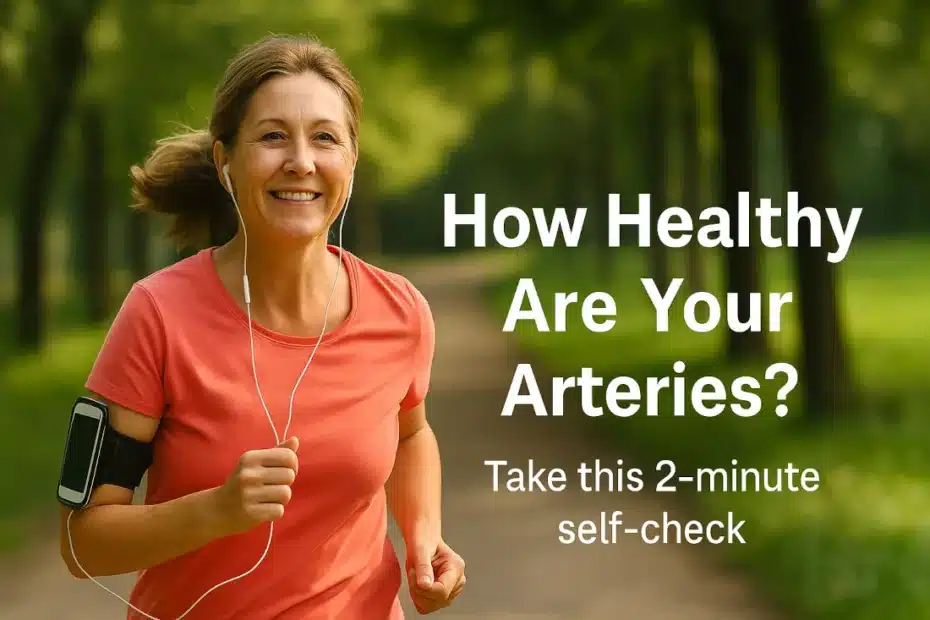Last Updated on September 5, 2025 by Max
You can’t see or feel your arteries aging. They don’t ache or send warning signals until trouble is already underway. Yet deep inside, your blood vessels may be stiffening, inflamed, or losing their ability to relax — the earliest step toward cardiovascular disease.
The good news? Your body gives subtle signs of how well your endothelium (the thin lining of your blood vessels) and nitric oxide system are working. This short self-check translates decades of research into six quick questions.
It’s not a diagnosis — but it will give you a snapshot of your artery health today, and a push toward the habits that keep vessels flexible for life.
Take the Quiz
🩺 How Healthy Are Your Arteries? Self-Check
Answer six quick questions. See your nitric-oxide and endothelial health signal.
Evidence notes
Exercise enhances endothelial NO synthase (Green, D.J., 2014). Dietary nitrate lowers blood pressure (Kapil, V., 2010). ED can indicate vascular disease (Kloner, R.A., 2005). Insulin resistance impairs endothelial function (Mather, K.J., 2001). Elevated blood pressure and lifestyle risks reduce NO and increase stiffness (Vita, J.A., 2005; Förstermann, U., 2012).What Your Score Means
- Green zone → Your arteries are sending a strong nitric oxide signal. Keep up the lifestyle habits that protect your circulation.
- Yellow zone → Early warning signs. Small tweaks in diet, exercise, or sleep could make a big difference.
- Red zone → High risk for dysfunction. It’s time for a serious look at habits and a conversation with your doctor.
Every answer reflects real mechanisms: blood pressure, diet, exercise, stress, and even sexual function all connect directly to nitric oxide and endothelial health.
Next Steps
If your quiz raised concerns, don’t panic. Artery health isn’t fixed — it’s changeable. Research shows you can improve nitric oxide production and reverse early dysfunction with consistent choices.
📖 Read next: Nitric Oxide and Endothelial Health — Protect Your Heart
🧰 Or explore more on our Interactive Tools Hub — calculators, visual explainers, and quizzes designed to put science into your hands.
